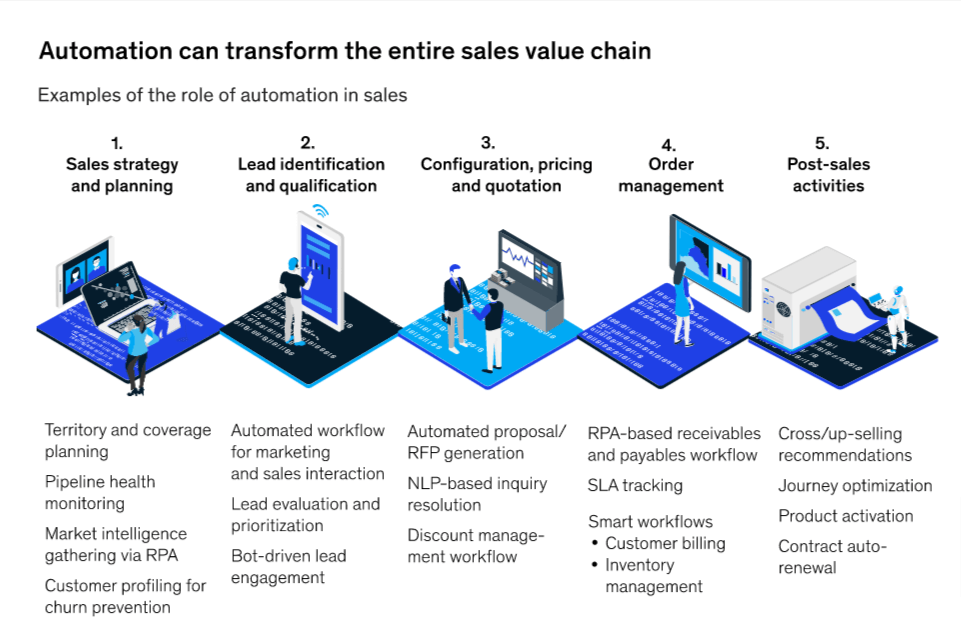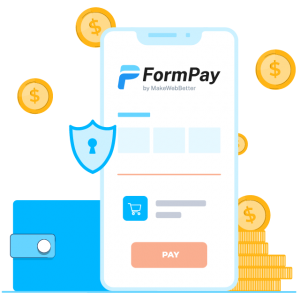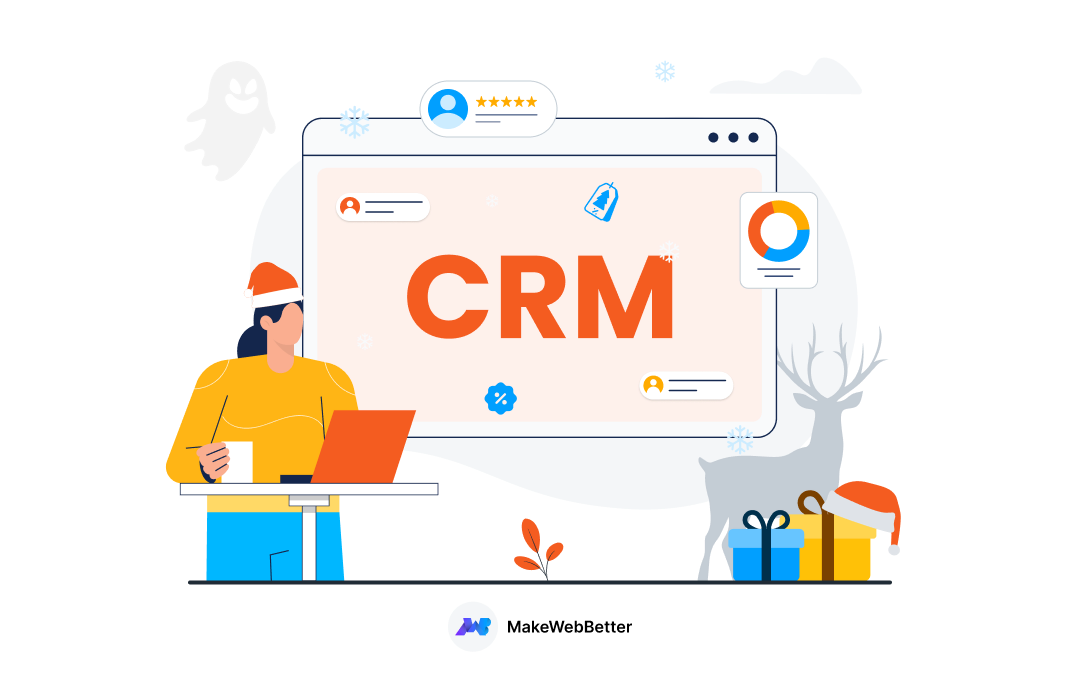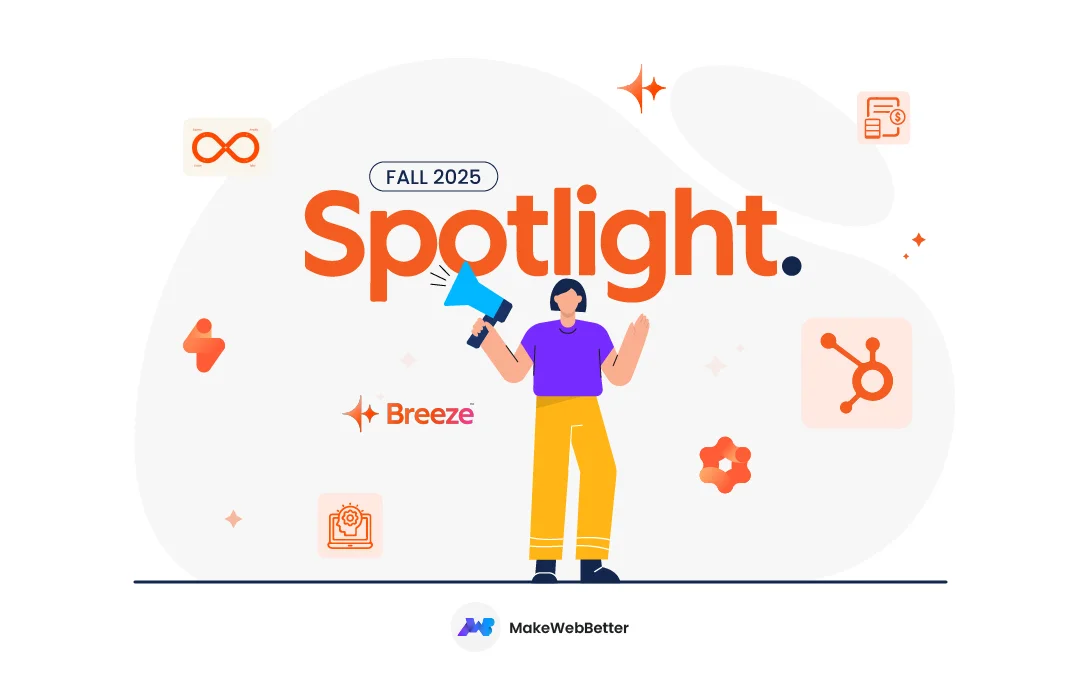Despite your best efforts, even after using a powerful lead-generation tool like HubSpot, are you still struggling to close more deals? Let’s just admit this. One must stay updated with the features to extract the real juice of HubSpot features and pricing.
The lifeblood of a business rests upon the recurring businesses and ROI you get. Whatever the reason, closing more deals can be a difficult and frustrating task.
Perhaps you’re facing challenges like stiff competition, a saturated market, or lacking trust from potential clients.
In this blog, we’ll explore some common difficulties businesses face when closing deals and provide actionable tips to help you overcome these obstacles. Well, most importantly, learn to close more deals with HubSpot CRM and sales hub.
You Will Learn:
Why on earth was a CRM created? In a single sentence, CRM like HubSpot was meant to create, close and track deals in different pipelines. The average ROI for CRM is $8.71 for every dollar spent. This CRM stat makes you believe that all you have to do is “buy a CRM.”
What’s next? Unless you know how to proceed, it’s like running with scissors. It might as well be dangerous. To achieve what you may, you first need to make a sales process to achieve ‘the big revenue plan!’.
Click Here for Free HubSpot Sign Up
How To Build Your Sales Plan With HubSpot?
Why is it essential to close more deals in sales? Simple answer!
Revenue.
Planning and finalizing the sales process is never easy. However, HubSpot CRM eases your journey to achieving the perfect sales plan.

Grab Max Output With HubSpot Audit Checklist!
Organize & optimize your inaccurate & duplicate data & see better resulting CRM performance!
STEP 1: Define Your Sales Goals & Objectives.
Start by determining what you want to achieve with your sales plan. This could be increasing revenue, improving conversion rates, increasing customer retention, or any other important metric to your business.
Choose the metrics that help you track progress toward your sales goals. For example, if your goal is to increase revenue, your metrics might include total sales, average deal size, and sales velocity.
Go through these 10 inbound marketing metrics for strong decision-making that will ultimately close more deals with HubSpot.
 Example of sales team mapping with the buyer’s journey within their established sales process.
Example of sales team mapping with the buyer’s journey within their established sales process.
That is to say, start by setting Specific, Measurable, Attainable, Relevant, and Time-bound goals that align with your overall business objectives. For example, your sales goal might be to increase revenue by 10% in the next quarter.
After that, you can set specific targets for each metric based on your sales goals. For instance, if your goal is to increase revenue by 10%, you might target closing 20 new deals monthly.
STEP 2: Create a Sales Process
A sales process refers to a set of steps and actions that a salesperson or sales team follows to move a potential customer through the sales funnel stages and ultimately close a deal.
The process typically includes these stages:
- Identifying potential customers
- Qualifying leads
- Making initial contact
- Discovering the customer’s needs and pain points
- Presenting a solution or product
- Overcoming objections
- Negotiating and closing the sale.
A sales process varies depending on the industry, the product or service offered, and the customer’s buying habits. So, what does an effective sales process look like? It helps
- Streamline the sales cycle
- Improve efficiency and productivity
- Increase the chances of closing a sale
Above all, with the right sales process, your salespeople can focus on the right prospects and opportunities, nurture relationships with customers, and build trust and credibility with their clients.
Your sales process should align with your target audience’s buying journey. Understanding the HubSpot lifecycle stages also let you give attention to them based on where they are on their buying journey with your business.
Ensure to focus on lead generation, lead nurturing, sales qualification, proposal creation, and closing the deal.
STEP 3: Anchor HubSpot Sales Hub
HubSpot CRM offers a range of sales tools to help you manage your sales process efficiently with the help of its CRM system, sales automation, email tracking, and analytics. You should know that there are tailored HubSpot plans that are fit for different businesses.
| For Businesses & Enterprises | For Individuals & Small Teams |
| Professional plan at $450/month | Free Signup for CRM tool |
| Enterprise plan at $1200/month | Starter CRM suite at $30/month |
While different hubs focus on different areas of your business, the Sales hub specifically focuses on grey areas of your business sales processes. After the basic HubSpot CRM setup, head over to:
- Create tasks for your salespeople
- Schedule your meetings page
- Create sales dashboard
- Set your sales goal within the CRM & submit a sale forecast for the quarter
- Study sales analytics and create sales reports. Get details about HubSpot reporting here.
STEP 4: Develop a Content Strategy
Whatever you do, I cannot stress enough that developing a content strategy is extremely important for building a sales plan.
A well-executed content strategy can drive sales by:
- Attracting and engaging potential customers
- Educating them about your product or service
- Ultimately converting them into paying customers.

How does creating a content strategy help you create a sales plan?
- Valuable and relevant content that speaks to the needs and interests of your target audience attracts potential customers to your brand. Through blog posts, white papers, social media updates, videos, and other types of content that provide value to your audience.
- Establish your brand as an authority in your industry to produce high-quality content that builds consumer trust. This can help to overcome objections and make it easier to close sales.
- Educate your audience by producing tailored content for different stages of the audience’s buyer’s journey. Subsequently, these leads will convert to paying customers.
When it comes to developing a content strategy, you can choose HubSpot CMS. Here’s a no-nonsense guide on HubSpot CMS that will clear all your doubts.
HubSpot CMS: A content management system that backs your sales plan.
- HubSpot CMS is ideally built for inbound marketing, focusing mainly on attracting and engaging potential customers. Hence, driving sales.
- Its integration with HubSpot sales and marketing tools makes it easy to create a cohesive sales plan that aligns with your content strategy.
- The range of drag-and-drop HubSpot themes with blog templates makes its customization effortless.
- If you weren’t already aware, HubSpot has analytics that allows you to create thorough reports for all your marketing assets like website & landing pages, social media accounts, and email templates.
STEP 5: Track & Measure Results
Use HubSpot’s analytics tools to monitor your sales performance and identify areas for improvement. This helps you make data-driven decisions to optimize your sales plan.
And you can start right from the beginning with the perfect plan each time. Additionally, when you know the process is refined and authenticated enough, automate it!
Use HubSpot’s Sales Tools to Enhance Your Sales Process
We can cater to your needs of streamlining your business sales processes. Join us for a discussion.
Close HubSpot Deals: The More, The Better! 9 Quick Tips
HubSpot is an all-in-one platform that offers sales and marketing tools. It provides a complete view of the customer lifecycle from lead generation to customer retention. These 9 tips will definitely help you close more deals:
- Get a proper HubSpot sales hub set up based on your business needs
- HubSpot sales automation for streamlining your sales efforts
- Keep track of your sales activities
- HubSpot reporting and analytics for tracking your progress and adjusting your strategy
- Identify best leads with lead scoring
- Keep track of sales activities in HubSpot
- Integrating HubSpot with other tools to boost your sales effectiveness
- Use the Sales Hub extension for Gmail to manage conversations
- Personalize and tailor your automated sales emails.
1. Proper HubSpot Sales Set Up Based On Your Business Needs
Your customer relationship management system should be tailored to your business because every business has unique processes, workflows, and customer interactions. Believe it or not, a customized CRM’s power over your business process is above all.
Customized setup of HubSpot Sales Hub can help businesses streamline their sales processes and improve their sales performance in several ways:
- Firstly, you’ll be able to automate sales processes such as lead nurturing, lead scoring, and follow-up communication. This helps sales teams focus on the most promising leads and save time on manual tasks.
- Secondly, you’ll offer personalized communication and content to leads and customers. Hence, build trust and rapport with prospects, leading to higher conversion rates and customer loyalty.
div class=”mwb-highlight-sec”>
Check App: Reward Your Customers with HubSpot Loyalty Reward Points
- Thirdly, with a customized setup, you can generate reports on the specific sales metrics that are important to your business. So, your sales team can make data-driven decisions.
- Finally, a customized sales hub setup, inbound marketing, and professional HubSpot Elite partner like MakeWebBetter can recommend the best integration available for your business. This helps create a seamless sales process, leading to better customer experiences and higher conversion rates.
Unlock Full HubSpot Potential With FREE AUDIT From EXPERTS!
You don’t come across a free HubSpot offer every day! Get aboard!
2. HubSpot Sales Automation for Streamlining Your Sales Efforts
One-third of sales and sales operations tasks can easily be automated with today’s technology. HubSpot is a sales automation platform that boosts your productivity. If you’re not leveraging sales automation yet, here’s what’s happening to your salespeople:
- Wasted time that should actually be focused on selling.
- More failures, missed opportunities & inconsistent results.
- Slow-paced scaling due to a non-streamlined process.
- Weak & imperfect data-backed decisions tend to be inaccurate.
Do you want this?
Is this how we’re going to close more deals with HubSpot?
I hear you say NO! So, setting up workflows sounds like the right option for you.
 Source: McKinsey & Company Research
Source: McKinsey & Company Research
These are the workflows to improve sales process efficiency and ultimately close HubSpot deals:
1. Task Management Workflow
Use workflows to automatically assign tasks to sales reps based on specific criteria, such as when a lead reaches a certain lead score or when a deal moves to a specific stage.
2. Book a Meeting
If a prospect submits the “Contact Us” form but fails to book a meeting within 5 minutes, create a workflow that assigns a task and an owner to the contact.
This will prompt the salesperson to send a templated email, providing the prospect with another opportunity to schedule a meeting at their convenience.
3. Internal Notifications
Use workflows to notify team members when a new lead is added to the CRM or when a deal is won. This can help ensure that everyone is on the same page and that important sales opportunities are not missed.
4. Proposal Follow-Up
After a proposal call, a prospect’s deal may remain stagnant in the pipeline. To avoid this, set up a workflow that sends a reminder to follow up with the prospect after 3 weeks before moving the deal to the “Dormant” stage.
Note: HubSpot pipeline stages give you a visual representation of your sales process to understand where your deal stands in each sales pipeline stage.
5. Update to Closed Won Stage
Automate the process of moving a deal to the “Closed Won” stage by using payment as a trigger. Deal stages in HubSpot can further be customized to match a better sales closing process. There is always scope to close more HubSpot deals.
6. Start the Onboarding Process
Use a notification of payment as a trigger in a workflow to initiate the onboarding process. This can be accomplished by sending an email to the designated onboarding representative, informing them of the payment received.
3. Keep Track Of Sales Activities & Sales Pipeline
Start by creating a customized sales pipeline that matches your sales process. You can include the various stages a prospect goes through before becoming a customer in your sales pipeline, such as “Prospect,” “Qualified Lead,” “Proposal Sent,” and “Closed Won.”
- Add them as deals to your sales pipeline as you interact with prospects and leads. Make sure to add important details such as the deal name, amount, and expected close date.
- As deals move through your pipeline, make sure to update their stage accordingly. This will help you keep track of where each deal is in the sales process and what actions need to be taken next.
- Log all relevant sales activities in HubSpot, such as calls, emails, and meetings, to keep track of your interactions with each prospect and provide valuable insights into what is working and what is not.
Need Personalized HubSpot Support?
Have you been struggling with HubSpot? Let experts handle it!
Above all, as we discussed in the point above, use automation to help streamline your sales process and save time. This can include automated follow-up emails, reminders to follow up with leads, and alerts when a deal is won or lost.
Don’t forget to analyze your pipeline and identify areas for improvement. This can include identifying stages where deals tend to get stuck, tracking conversion rates between stages, and identifying trends in your sales activity data.
Role of HubSpot Deal Stages in the sales processWith HubSpot, you can track your sales pipeline and manage deals with HubSpot deal stages. Deal stages are the different steps in your sales process that a potential customer goes through before closing a deal. You can customize your deal stages to match your sales process. Moreover, the HubSpot deal properties allow adding fields to store and track important information. With the right information to track closing sales in HubSpot becomes child’s play for you! |
4. Use HubSpot Reporting and Analytics for Tracking Your Progress To Adjusting Your Strategy
If you want a clear view of your sales pipeline, you need to start creating reports in your CRM. It will offer you insights into sales team performance and sales trends. Subsequently, you’ll be able to optimize your sales processes to make data-driven decisions.
You’ll have a clear roadmap for achieving your business objectives. I know it sounds very easy, but when you sit to create one, you might not get a perfect report. This is why HubSpot has inbuilt templates to give you a headstart!
[On the other hand, we can also help you understand your goals and help you find your lost success with HubSpot. Hit us up anytime. 😄 ]
The HubSpot reporting system offers more than just basic reporting capabilities.
In addition to its vast selection of pre-built reports tailored to marketing and sales needs, it also features a Report Builder tool that empowers users to generate highly customized reports for any purpose.
Its user-friendly interface is intuitive and easy to learn, requiring minimal training for almost any user to become proficient.
To start creating reports in HubSpot, refer to this blog that talks about how to use HubSpot reporting for business sales & marketing. Once you start monitoring your progress toward your sales goals, you’ll close HubSpot deals faster!
As the saying goes, nothing or no one is self-sufficient. HubSpot acknowledges this truth and enables users to design custom objects within the CRM system.
Create custom reports in HubSpot
Creating these custom objects is a straightforward process that can significantly enhance the functionality of the HubSpot system.
- Navigate to the “Reports” section of your HubSpot account> Click on the “Create custom report” button.
- Choose the type of report you want to create (e.g., dashboard, data table, or funnel) > Select the metrics and data sources you want to include in your report.
- Apply filters and groupings as needed to refine your data > Customize the design and layout of your report using the available options.
- Preview and test your report to ensure it meets your needs > Save and publish your report, or share it with others as needed.
The specific steps may vary depending on the type of report you want to create and the data sources you’re working with. Additionally, HubSpot provides various resources and tutorials to help users create custom reports, so it’s worth exploring those options as well.
5. Identify Best Leads With Lead Scoring To Focus On Nurturing
You shouldn’t leave a stone unturned if you want to leverage all the leads generated from your inbound marketing efforts. To identify the best leads with lead scoring in HubSpot, follow these steps:
Define your ideal customer profile (ICP)
Start by identifying the characteristics that make a lead a good fit for your business. This may include factors such as industry, company size, job title, location, and more.
Set up lead scoring criteria
Once your ICP is defined, you can set up lead scoring criteria in HubSpot. This involves assigning point values to specific actions or attributes that indicate a lead’s level of interest or engagement. For example, you might assign points for things like visiting your website, downloading a whitepaper or resource, attending a webinar, or filling out a contact form.
Determine lead scores and thresholds
As leads engage with your business and accumulate points, their lead score will increase. You can set up different score thresholds to indicate different levels of engagement or interest. For instance, a lead with a score of 100 might be considered a “Marketing Qualified Lead” (MQL), while a lead with a score of 200 might be considered a “Sales Qualified Lead” (SQL).
Focus on nurturing top-scoring leads
Once you have identified your highest-scoring leads, you can prioritize them for further nurturing and follow-up. You can send targeted marketing messages, personalized sales outreach, or other tactics to move the lead further down the funnel.
Refine your lead scoring criteria over time
As you continue to work with your lead scoring system, you may find that certain criteria are more or less effective at identifying high-quality leads. Use this information to refine your criteria and adjust your point values and thresholds accordingly.
This way, you can use lead scoring to identify the best leads in your database and focus your efforts on nurturing those with the greatest potential for conversion.
6. Integrating HubSpot with Other Tools to Boost Your Sales Effectiveness
Integrating HubSpot with other tools can help boost your sales effectiveness. One application can only serve you for all your needs so far. At some point, you’ll need to connect more apps to it. So, to create a streamlined process, HubSpot integrations are a must!
By integrating your HubSpot CRM with other sales tools, you can automate many of your sales processes and eliminate time-consuming manual tasks. For example, you might use a tool like Zapier or PieSync to sync data automatically, reducing the need for manual data entry.
What else?
Let me recommend you a few HubSpot integrations and how they can also help you:
- To enhance your lead-scoring game, you can install LinkedIn Sales Navigator or Clearbit. You’ll be able to identify the most promising leads more accurately and efficiently. These also offer you additional data points so you can use them for upgrading your lead scoring criteria.
- If using WooCommerce for an eCommerce store, you should install the HubSpot WooCommerce Integration. It is a powerful marketing and sales tool, providing your team with a seamless customer experience and streamlined workflow. You can sync customer data, track customer behavior, create targeted campaigns, and streamline sales workflows.

- Integrating HubSpot with tools like Outreach or SalesLoft helps you improve your sales outreach. It enables you to create personalized, automated email campaigns and track engagement metrics to identify which messages resonate with your prospects.
- Collecting payments play an important role to close HubSpot deals. Formpay HubSpot integration is a payment processing solution that allows businesses to accept payments through their online forms easily. This can be especially effective if yours is a nonprofit profit organization using HubSpot and looking to collect donations.

- Hotjar and Crazy Egg HubSpot integration can provide additional insight into how visitors interact with your website. This can help you identify areas where your messaging or user experience may need improvement and gain a deeper understanding of your visitors’ behavior and preferences.
- Integrating HubSpot with tools like Slack or Microsoft Teams can help increase collaboration and communication across your sales and marketing teams. Integrating HubSpot data with these tools ensures everyone can access the same information and work together more effectively.
HubSpot integrations can lead to more effective and efficient sales efforts and improved business results. Hence, close more HubSpot deals.
8. Manage Sales Conversations Directly From Inbox
Conversations with prospects are an art. What makes it better is that even if you’re not an artist, you can still be a better salesperson with HubSpot. While keeping customer interaction records, emails play an essential part. Add HubSpot to your Gmail account to log emails sent from Gmail in HubSpot CRM quickly and easily.

It also enables sales reps to access their HubSpot CRM contacts and deals directly from Gmail, allowing them to update and manage their sales pipeline without leaving their inbox. I love how this integration can let you:
- Schedule meetings
- Run email campaigns
- Work on HubSpot sales prospecting
- Track all communication in one place
Other key features of the Sales Hub Extension for Gmail include
- Email tracking, which allows sales reps to see when recipients open and click on their emails,
- Email sequences, which automate sending a series of emails at predetermined intervals.
- Email templates you can leverage as a starting point and customize them as needed to fit your specific situation.
- Schedule follow-up emails to ensure you stay current with your leads. You can set reminders to follow up at specific intervals, such as a week or two after the initial email.
9. Personalize and Tailor Your Automated Sales Emails
Personalization is key to building strong relationships with prospects and closing more deals. Use HubSpot’s personalization features, such as personalized emails, video messages, and dynamic content, to tailor your outreach to each prospect’s needs and interests.
To personalize your emails, you should keep these things in mind to close HubSpot deals better:
- Group your contacts with HubSpot’s list segmentation based on their interests, behavior, and other relevant factors. This will enable you to tailor your email content to their needs and pain points.
- Insert personalization tokens in the email template you’re using. Your sales email aims to make customers feel more personal and relevant. It will automatically populate with the recipient’s name, company, or other relevant prospect details.
- Needless to say, write compelling subject lines. To check if they work, use A/B testing to experiment with different subject lines and determine what works best.
- To tailor your email content to customer-specific context and increase its relevance, use dynamic content. It will display different content blocks based on the recipient’s location, device, or other criteria.
- Last but not least, ensure you’re following up at the right time. HubSpot’s automated email sequencing will let you set up triggers based on the prospect’s behavior, like open or click rate.
That was all about how to close HubSpot deals better and more efficiently. Let’s give you a real-life example of how HubSpot sales software helped Cansulta.
Case Study: Real-Life Example of How HubSpot Sales Hub Has Helped Cansulta Close More Deals Ft. MakeWebBetter
The main objective of Cansulta is to assist all businesses, regardless of their scale, in achieving success by linking them with a reliable network of screened consultants who are equipped to offer tailored guidance and assistance at any time.
Cansulta wanted to efficiently, rapidly, and at scale establish and maintain relationships with their B2B leads, prospects, and clients while maintaining personalization and a “human touch.”
To streamline their sales and marketing operations, Cansulta turned to MakeWebBetter, a HubSpot Elite solutions partner, for help implementing HubSpot’s Sales Hub.
MakeWebBetter worked closely with Cansulta to understand their unique sales and marketing needs and develop a customized HubSpot solution to enable them to achieve their goals.
How did MakeWebBetter come to their rescue?
HubSpot Sales Hub Implementation
MakeWebBetter helped Cansulta implement HubSpot’s Sales Hub, including configuring sales pipelines, creating deal stages, and setting up customized sales reports and dashboards.
Targetted Email Templates
With the implementation of email templates, Cansulta was finally able to initiate its email outreach campaign that had been long overdue. This campaign has generated a substantial portion of the website’s traffic and has significantly enhanced brand recognition.
Lead Management & Sales Automation Process
MakeWebBetter helped Cansulta streamline its lead management processes using HubSpot’s lead scoring and segmentation features.
We developed a customized lead scoring model that enabled Cansulta to prioritize its sales efforts based on the most qualified leads. We added automation to every customer deal stage in HubSpot.
Design Dedicated Landing Pages
To entice specific traffic and acquire leads, we developed landing pages that varied in complexity, ranging from basic designs to more intricate ones that included forms.
Chatbot Build-Up
Utilizing HubSpot, we designed a Chatbot model that operated on a decision tree framework with multiple pathways available on the client’s website. The Chatbot model was created to provide assistance to customers seeking answers to intricate questions, enabling them to solve problems independently.
Take Your Business To New Heights With MakeWebBetter HubSpot Services
Alone we can do so little; together, we can do so much!
Conclusion
In no dimension will closing more deals be easy. Understanding customer needs and creating a perfect sales process is incredibly important to every other brand in different industries. To make sure you stand apart from competitors, you must follow the above tips and see a gradual change. You’ll be able to close HubSpot deals better than you did last time.
On a different note
Closing deals in HubSpot can be a breeze if you partner with a reputable solutions provider like MakeWebBetter.
By leveraging their expertise and experience, you can
- streamline your sales processes,
- automate tedious tasks, and
- achieve greater success with HubSpot’s powerful tools and features.
With their customized solutions and ongoing support, you can take full advantage of HubSpot’s Sales Hub and Marketing Hub to drive growth and realize your business goals.
Book a call with MakeWebBetter today to learn how they can help you achieve your sales objectives with HubSpot. Above all if not, at least grab this free HubSpot audit before you leave. 😁











